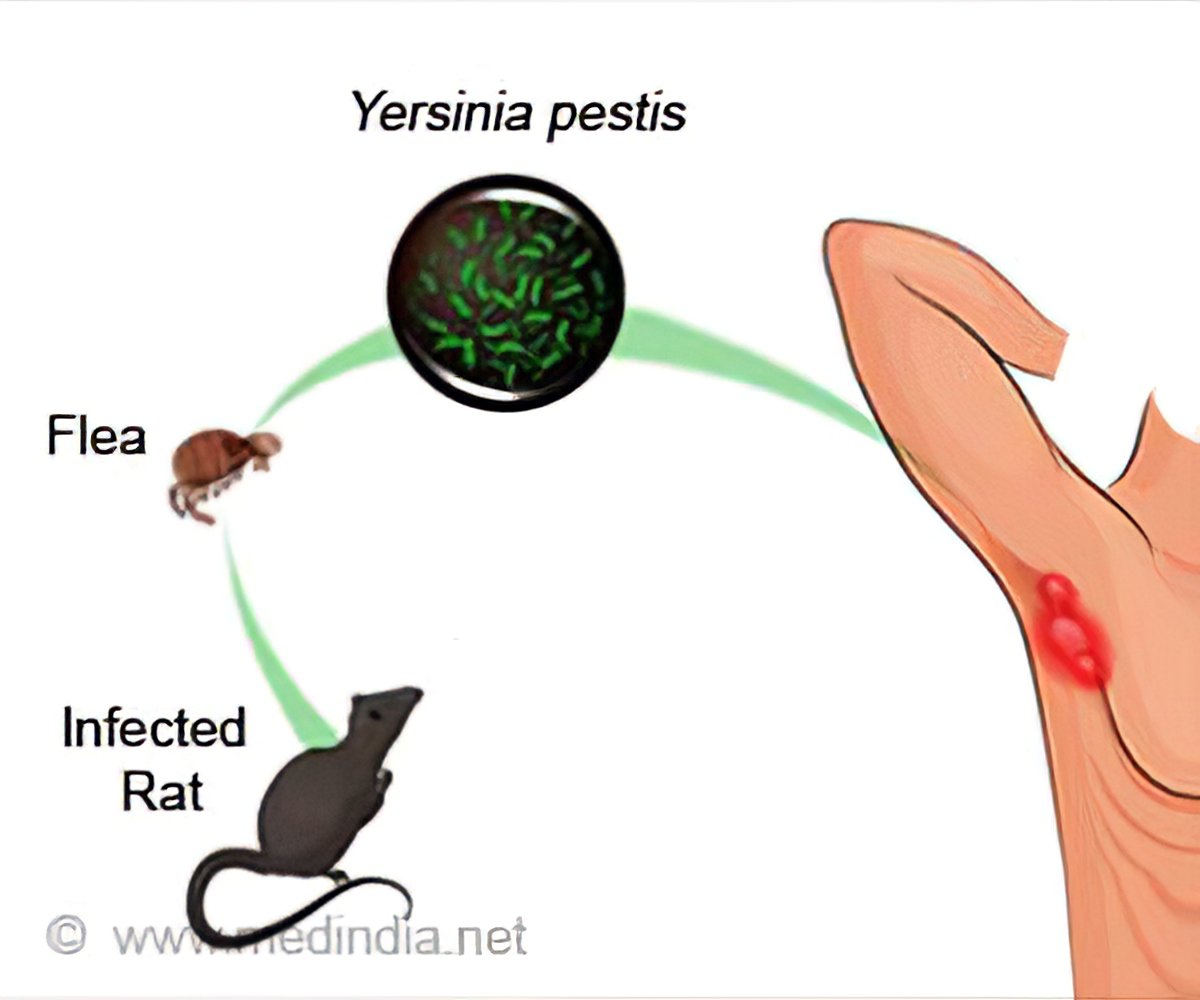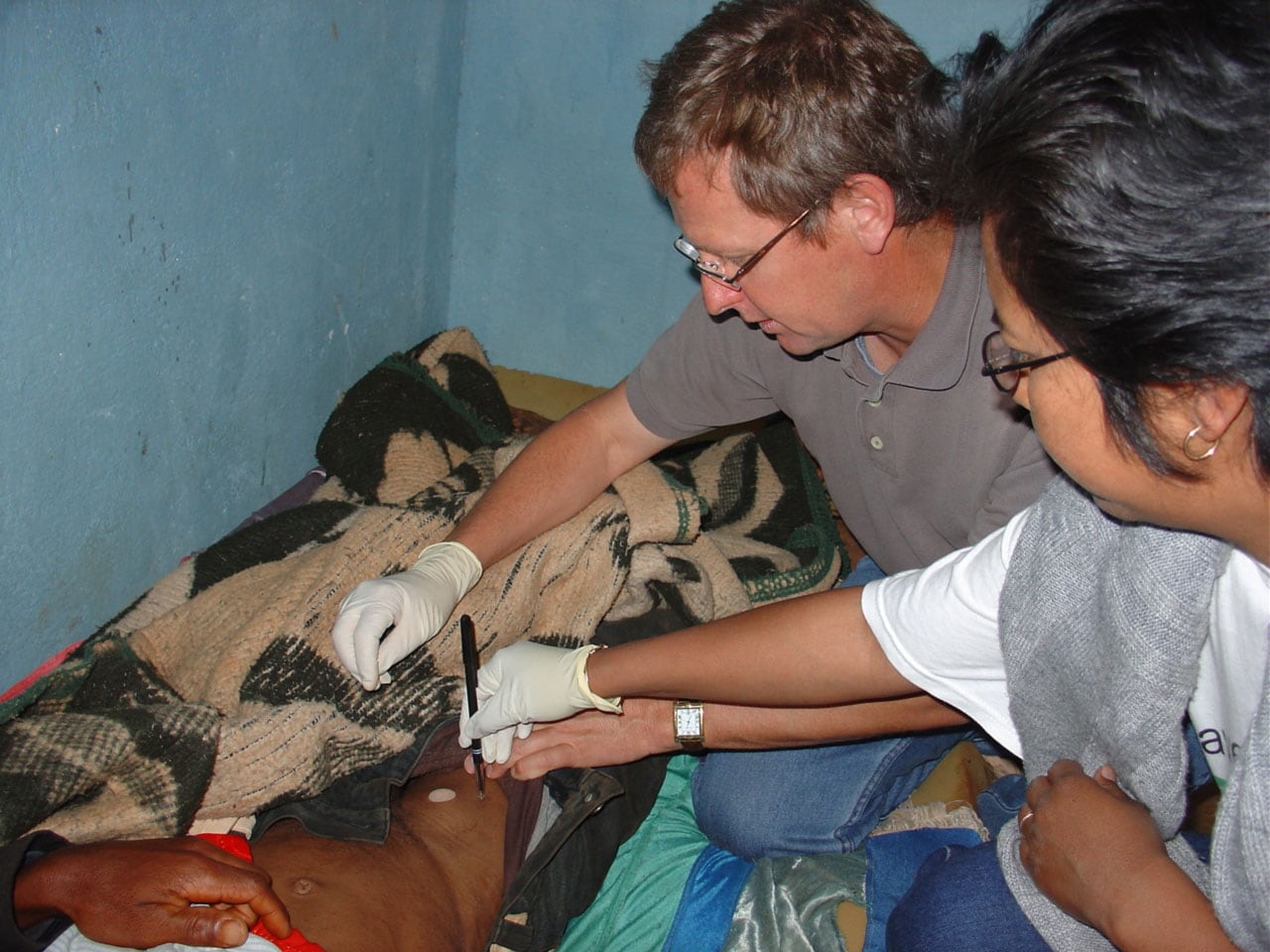Modern genetic analyses indicate that the strain of Y. Chief among its symptoms are painfully swollen lymph glands that form pus-filled.
 23 Fourth Novel The Plague Ideas Plague Black Death Bubonic Plague
23 Fourth Novel The Plague Ideas Plague Black Death Bubonic Plague
It is now mostly endemic in Democratic Republic of the Congo Madagascar and Peru.

What is the bubonic plague. The bubonic plague is an infectious disease caused by the bacteria Yersinia pestis a zoonotic bacteria which is often found in small mammals like rodents. Pestis strains known to cause disease in humans. Bubonic plague is the most commonly occurring type of plague and is characterized by the appearance of buboesswollen tender lymph nodes typically found in the armpits and groin.
It mainly results from the bite of an infected flea. In rare cases plague spreads to the covering of the brain. Along with symptoms like fever and chills septicemic plague can cause necrosis.
Each year between 1000 to 2000 cases are reported to the World Health Organization WHO. What is bubonic plague. Bubonic plague is the most common form of plague.
Plague is a potentially lethal infectious disease that is caused by bacteria called Yersinia pestis that live in some animals - mainly rodents -. Bubonic plague occurs when the infection causes large swollen lymph nodes called buboes. Bubonic plague is a rare but serious bacterial infection transmitted by fleas from rodents.
It is a rare disease nowfrom 2010 to 2015 there were 3248 cases reported worldwide including 584 deaths. Bubonic plague affects the lymph nodes and usually comes from a flea bite. Modern genetic analysis suggests that the Bubonic plague was caused by the bacterium Yersinia pestis or Y.
Bubonic plague one of three clinical forms of plague an infectious disease caused by the bacterium Yersinia pestis. Its usually spread by fleas. The bubonic plague was first introduced in the US.
Untreated it can spread to other systems of the body. It may also result from exposure to the body fluids from a dead plague-infected animal. These bugs pick up the germs when they bite infected animals like.
Untreated it can move into the blood causing septicemic. How fatal is it. Septicemic plague refers to an infection in the blood and can be the first sign of infection or develop.
According to WHO bubonic plague is the most common form and is characterised by painful swollen lymph nodes or buboes. The Black Death is widely believed to have been the result of plague caused by infection with the bacterium Yersinia pestis. Pestis introduced during the Black Death is ancestral to all extant circulating Y.
It is a zoonotic disease and it can be transmitted to other animals or humans. Bubonic plague infects your lymphatic system a part of the immune system causing inflammation in your lymph nodes. The plague is caused by bacteria called Yersinia pestis.
The CDC states that between 1900 and 2012 there have been 1006 confirmed or probable plague human cases with more than 80 percent being bubonic. Septicemic plague most commonly comes from a bite from an infected animal but it can also develop from untreated bubonic plague. The plague spreads along the lymph system to every organ.
Bubonic plague has a 13 death rate in treated cases and a 50-60 death rate if left untreated. In the 20th century.
 Yes The Plague Still Exists Here S What It S Like Now In The Us Abc News
Yes The Plague Still Exists Here S What It S Like Now In The Us Abc News
 What Is Bubonic Plague Bbc News
What Is Bubonic Plague Bbc News
 Bubonic Plague Causes Symptoms Diagnosis And Prevention
Bubonic Plague Causes Symptoms Diagnosis And Prevention
 China Records A New Case Of Bubonic Plague Black Death In Its Inner Mongolia Region Nilefm Egypt S 1 For Hit Music
China Records A New Case Of Bubonic Plague Black Death In Its Inner Mongolia Region Nilefm Egypt S 1 For Hit Music
 Diagnosis And Treatment Plague Cdc
Diagnosis And Treatment Plague Cdc
 Why Hasn T The Us Eradicated The Plague Bbc News
Why Hasn T The Us Eradicated The Plague Bbc News
:format(jpeg)/cdn.vox-cdn.com/uploads/chorus_image/image/47551639/shutterstock_18274534.0.0.jpg) An Oregon Teenager Was Just Diagnosed With Bubonic Plague Here S What You Need To Know Vox
An Oregon Teenager Was Just Diagnosed With Bubonic Plague Here S What You Need To Know Vox
 Bubonic Plague Symptoms What Is The Bubonic Plague Can You Still Get It Express Co Uk
Bubonic Plague Symptoms What Is The Bubonic Plague Can You Still Get It Express Co Uk
